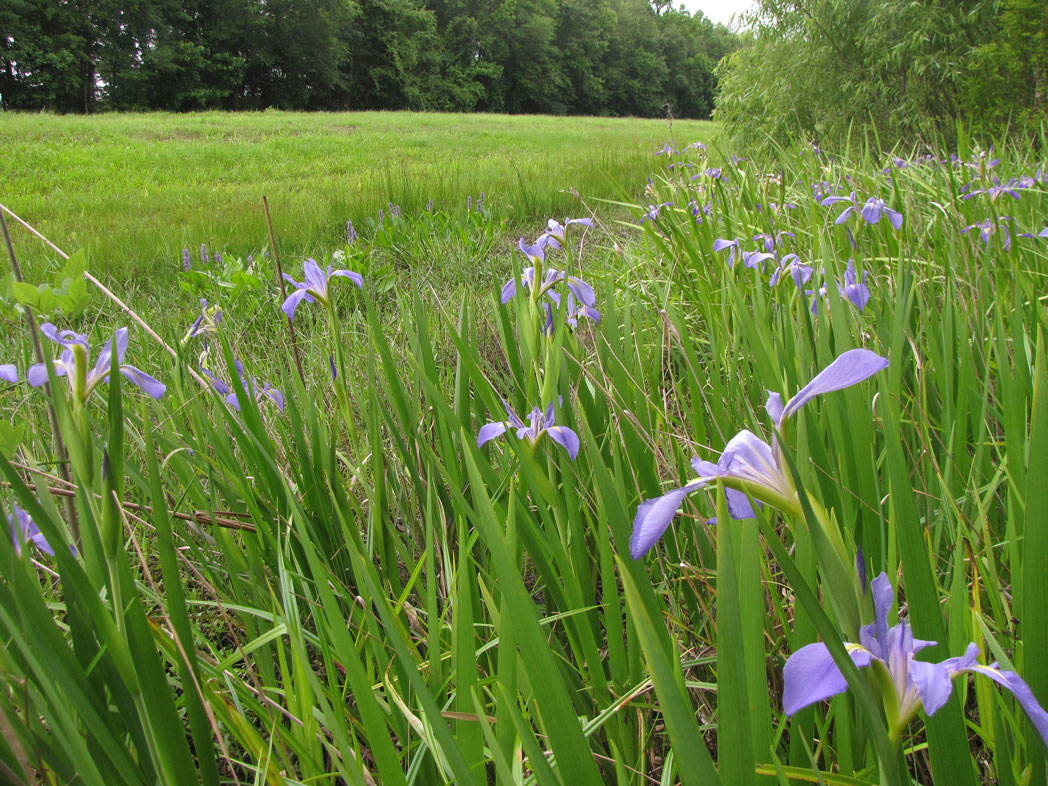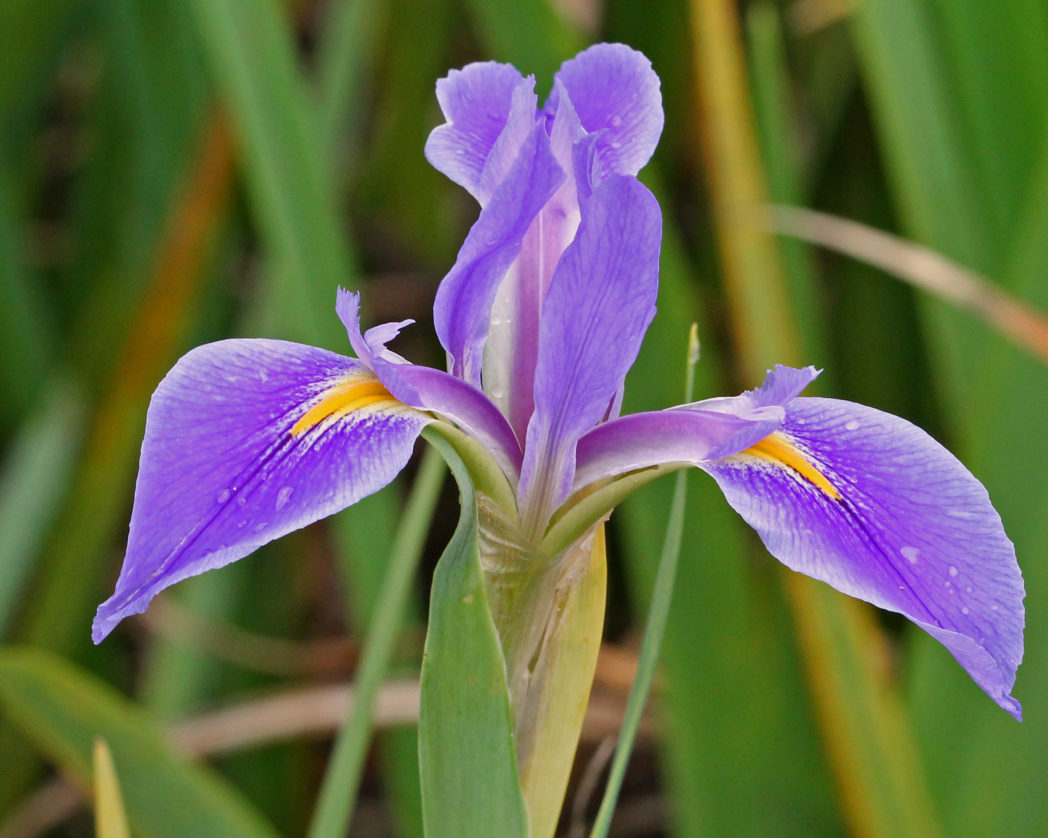Prairie iris
Pictured above: Prairie iris (Iris savannarum) by Mary Keim. Click on terms for botanical definitions. View post as a PDF.
Prairie iris (Iris savannarum) is an emergent aquatic with showy flowers that bloom in spring. It has one of America’s largest native iris flowers. J. K. Small, an early Florida botanist, talks about colonies as far as the eye could see. It occurs naturally in swamps, wet prairies, and marshes and along the edges of rivers and ditches. Its seeds are eaten by birds.
The distinct whitish-blue to purple flowers of Prairie iris each have three petals and three sepals. The petals are narrow and mostly erect. The sepals are more recognizable and often mistaken for petals. They are longer (measuring 4 to 5 inches), spatulate with a pointed tip, downward-arching, and have a yellow to whitish “signal” or crest along their midribs. Several flowers usually occur on each flowering stem. Leaves are bright green, swordlike, and erect, standing up to 3 feet tall and overlapping at their base. Seeds are born in a three-parted capsule. Roots are fleshy and rhizomatous.

Iris savannarum and Iris hexagona were previously considered to be a single species and some sources still reference them as such. Iris savannarum is the most common Iris species in Florida.
Family: Iridaceae (Iris family)
Native range: Eastern Panhandle south to Collier and Palm Beach counties
To see where natural populations of Prairie iris have been vouchered, visit florida.plantatlas.usf.edu.
Lifespan: Perennial
Soil: Moist to wet or inundated, rich, acidic soils
Exposure: Full sun to partial shade
Growth habit: 2–3’+ feet tall
Propagation: Division, seed
Florida regions of landscape suitability: North, Central, South
Garden tips: Prairie iris is an excellent plant for water features, lake edges, and retention ponds. Its spring-blooming flowers don’t last long, but their ornamental beauty makes the plant well worth adding to wet gardens or landscapes. It colonizes via underground rhizomes and can spread aggressively if conditions are right.
Prairie iris is often available at nurseries that specialize in native plants. Visit PlantRealFlorida.org to find a native nursery in your area.
Learn more about Prairie iris from the Florida Native Plant Society and the Institute for Regional Conservation.

